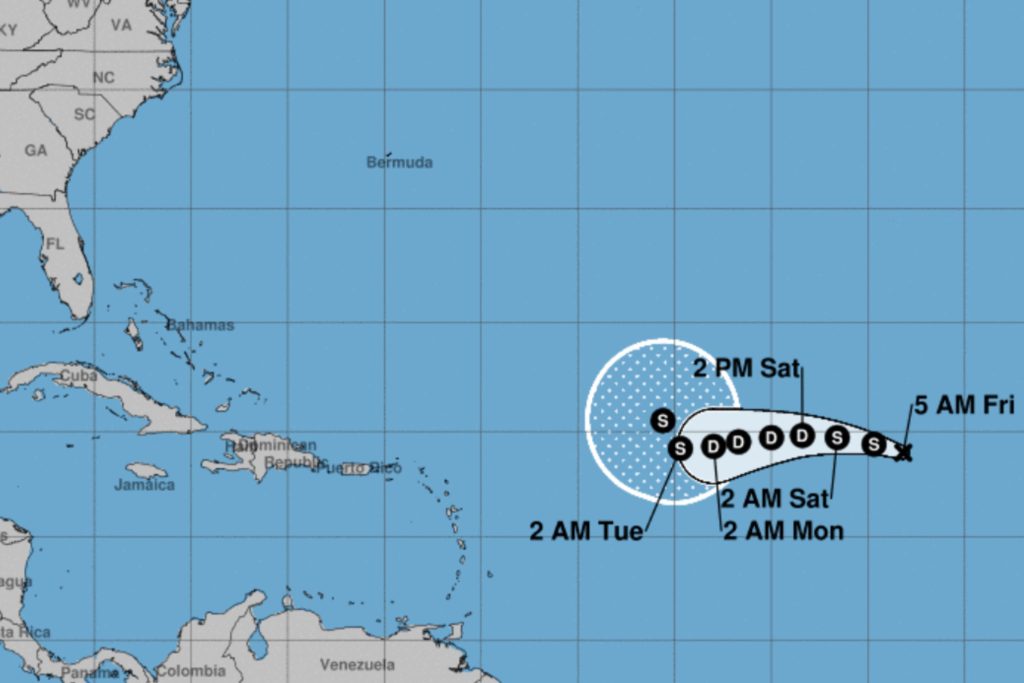A new weather system is brewing over the mid-Atlantic Ocean and is expected to be named Tropical Storm Gordon as it strengthens. Currently named Tropical Depression Seven, the system is forecasted to possibly become a tropical storm on Friday, marking the seventh named storm of the 2024 hurricane season. The tropical depression is currently moving westward towards the Caribbean but may veer northwest towards the U.S. in the coming week. The National Hurricane Center has issued a public advisory stating that the system could become a tropical storm, but little change in strength is expected through the weekend.
Tropical depressions are the initial stage of a tropical cyclone, forming when a low-pressure area organizes and sustained winds reach less than 39 mph. If the tropical depression intensifies and its sustained winds increase to between 39 mph and 73 mph, it is classified as a tropical storm, at which point it is given an official name. Should the tropical storm continue to strengthen and its sustained winds reach 74 mph or higher, it is classified as a hurricane. The previous six named storms of the season include Tropical Storm Alberto, Hurricane Beryl, Tropical Storm Chris, Hurricane Debby, Hurricane Ernesto, and Hurricane Francine.
After Gordon, the list of Atlantic storm names for 2024 includes Helene, Isaac, Joyce, Kirk, Leslie, Milton, Nadine, Oscar, Patty, Rafael, Sara, Tony, Valerie, and William. Two additional potential tropical depressions are forming in the Atlantic, one near the Leeward Islands and another off the Southeastern U.S. coast. The Leeward Islands system has a 20 percent chance of becoming a tropical cyclone in the next 48 hours, while the Southeast low-pressure system has a 30 percent chance of becoming a tropical cyclone in the next 7 days. Regardless of development, heavy rainfall and gusty winds are possible in affected areas.
Hurricane Beryl was the earliest-forming Category 5 storm ever recorded in the Atlantic, achieving Category 5 status on July 1. This surpassed the previous record set by Category 5 Hurricane Emily in 2005. Categorized as the strongest July storm on record, Beryl was also the first Category 4 storm observed in June. Hurricane Debby reached Category 1, while both Ernesto and Francine peaked at Category 2 strength. Francine was the most recent hurricane to impact the U.S., bringing fierce winds and flash flooding to Louisiana and Mississippi.
Two other potential tropical depressions are building in the Atlantic, one near the Leeward Islands and the other off the Southeastern U.S. coast. The Leeward Islands system is not showing favorable conditions for development due to dry air and has a 20 percent chance of becoming a tropical cyclone in the next 48 hours. The Southeast low-pressure system has a 30 percent chance of becoming a tropical cyclone in the next 7 days, with the potential for subtropical or tropical development early next week as it moves northwestward towards the coast. For any tips on science stories or questions about hurricanes, contact Newsweek at [email protected].













